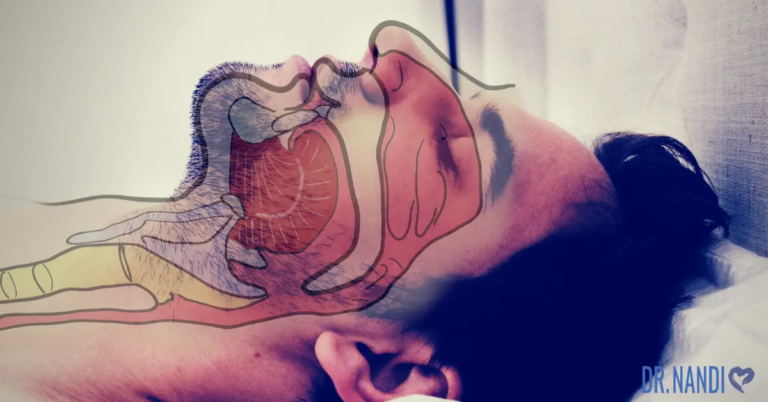Fleas – those tiny, relentless, irritating pests that can turn your peaceful home into an itchy battleground. Most flea infestations start with our beloved pets. If your furry companion is itching, chances are your home, garden, and furniture are next in line for a flea fiesta.
Once fleas make themselves at home on your pet, they’re not just content with the discomfort they bring. These persistent critters can lay up to a staggering 2,000 eggs in their lifetime. They can invade your entire living space, from carpets and furniture to fabrics and pet beds. It’s a silent invasion that can turn your cozy abode into a hotbed of itchiness and discomfort.
So getting rid of fleas early on is crucial because these pests reproduce rapidly. If left unchecked, a small flea problem can quickly escalate into a full-blown infestation, making it more challenging and expensive to eliminate. Moreover, fleas not only torment pets but can also transmit diseases and cause discomfort to humans.
Recognizing Flea Infestation: Signs to Look For
It’s crucial to be proactive and observant, especially during the warm, humid days of summer when fleas are most active, although they can indeed be a nuisance all year round. Spring is the optimal time to initiate preventive actions to protect your pets from these pesky parasites. But if your pet suddenly starts scratching more than usual, it’s time to check for fleas.
Identifying Fleas on Your Pet
When checking your pet for fleas, use a fine-toothed comb to sift through their fur and expose the skin underneath. You’re looking for tiny, dark spots or insects that are black, brown, or reddish and measure less than ⅛-inch. Fleas are known for their exceptional jumping abilities, facilitated by their six long legs. Even the discovery of a single flea should prompt immediate action, considering a single female flea can lay up to 50 eggs per day.
Behavioral Signs
Watch out for alterations in your pet’s behavior, such as incessant scratching, biting, or licking, which could indicate discomfort caused by fleas. Behavioral changes can also include restlessness, a decrease in activity, or a change in eating patterns.
Discovering Flea Dirt
In your inspection, you might find stationary dark specks on your pet’s skin, commonly known as “flea dirt,” which is actually flea feces. To ascertain whether it’s flea dirt, place the specks on a white tissue or paper towel and add a drop of water. If the specks dissolve into a reddish-brown color, it’s confirmed to be flea dirt, a sign of fleas feeding on your pet’s blood.
Spotting Flea Bites
Flea bites are also a clear indication of an infestation, leaving behind red, inflamed spots on your pet’s skin. Fleas usually focus on areas such as the belly, rear, neck, and ears.
Environmental Signs
In severe infestations, you might even notice fleas in your pet’s surroundings, like their bedding, or even on your carpets or furniture. Regular cleaning and vacuuming can help in identifying and reducing environmental infestations.
Signs of Flea Bites in Humans
Fleas prefer animal hosts but will resort to biting people when animals are unavailable. Understanding the signs and symptoms of flea bites is essential because it not only helps you identify a potential infestation but also enables you to take prompt action to alleviate the discomfort and eradicate these unwelcome guests from your home.
- extreme itchiness at the bite site
- a red, swollen wheal (lump) that develops within 30 minutes of being bitten
- a blister or small wound at the site of the weal, approximately one day after being bitten
- bites concentrated on the legs and feet
- secondary infections caused by scratching the bite site
Some people may become more sensitive to flea bites over time. The aftermath of a flea bite can be notably uncomfortable, characterized by extreme itchiness at the bite site. Within just 30 minutes of the bite, a red, swollen wheal or lump often forms, leaving a noticeable and bothersome mark.
As if this isn’t vexing enough, approximately one day later, a blister or small wound may develop at the site of the initial wheal, intensifying the discomfort. Flea bites tend to concentrate on the lower extremities, particularly the legs and feet, making mobility a bit of a challenge when dealing with an infestation.
Moreover, incessant scratching can lead to secondary infections, adding another layer of concern. In some cases, individuals may develop an increased sensitivity to flea bites over time, amplifying the need for effective prevention and treatment strategies.

Vet-Approved Homemade Flea Powder Recipe
For pet parents seeking a holistic approach to flea control, creating a homemade flea powder using natural ingredients is an effective alternative.
Ingredients:
- 1 cup Food Grade Diatomaceous Earth
- 1/2 cup Neem Powder
- 1/2 cup Yarrow Powder
Directions:
- Mix all ingredients together thoroughly.
- Store the mixture in a container with a shaker top, such as a mason jar with a perforated lid.
How to Apply on Your Pet:
- Apply the powder from head to tail along your pet’s spine in dry conditions. Brush your pet’s fur in the opposite direction so the powder comes in contact with the skin. Avoid the eyes and nose.
- Pay extra attention and ensure to apply the powder well on the tail, the area right above the tail, the belly/groin area, and any other areas fleas are usually found.
- Reapply the powder if your pet gets a bath or gets wet.
How Often to Apply Flea Powder
- For preventive use, apply once a month during the end of spring/summer.
- For flea infestations, the frequency of application depends on the severity of the infestation. In such cases, it is crucial to also apply the powder to the pet’s environment and vacuum consistently.
Expanded Uses for Flea Powder
This powder can also be used in the yard to repel and kill various pests, including fleas, ticks, spiders, ants, and mosquitoes, providing a comprehensive solution for a happy and healthy pet and a flea-free home.

The Secret Behind the Ingredients
This all-natural remedy combines the potent effects of Diatomaceous Earth, neem leaf powder, and yarrow powder — ingredients renowned for their insect-repellent properties and recommended by vets for flea extermination and prevention.
- Food-grade Diatomaceous Earth (DE) is a fine powder composed of the fossilized remains of diatoms, tiny aquatic organisms. It predominantly contains silica, which under a microscope, reveals sharp edges that can puncture the exoskeletons of insects, causing dehydration and death by purely physical means, devoid of any chemical action. These particles are so minute, that to humans and pets, it feels like a soft, fine powder, rendering it harmless, especially the food-grade, freshwater variant.
- Neem powder has its roots in Ayurvedic medicine and is derived from the Neem herb. It has been used for centuries as a remarkable herbal insect repellent, warding off fleas, ticks, lice, mites, ants, and mosquitoes. It houses active compounds like Azadirachtin, disrupting insect larvae’s metamorphosis, and preventing their development and propagation. Another effective compound, Salannin, has proven to repel biting insects even more effectively than chemical-based repellents containing DEET.
- Yarrow powder is well-regarded in herbal medicine, primarily for its natural wound healing, anti-inflammatory, and anti-microbial properties. It relieves irritated skin and offers protection against secondary infections resulting from flea bites, making it an invaluable component of this flea powder.
Personal RX for a Harmonious Home for You and Your Pets
The interrelation between pet health and household hygiene is paramount, particularly when addressing the menace of flea infestations. Fleas are not only a nuisance but also a health risk, causing discomfort to pets and potentially leading to the transmission of harmful parasites and diseases. Ensuring a clean, flea-free environment is crucial for the well-being of both pets and their owners.
- Regular Pet Grooming: Regularly bathing and grooming your pets can help in early detection and management of flea infestations, reducing the risk of them spreading in your home.
- Maintain Home Cleanliness: Regular cleaning, including vacuuming and washing pet bedding, is crucial to control and prevent the spread of fleas in the household environment.
- Opt for Natural Products: Explore my Toxic Ingredient Guide to identify harmful ingredients in cleaning and pet care products. Educate yourself on safer, more natural alternatives to protect your household and lead a greener life. Unlock the guide to natural living here.
- Strengthen Your System with the Detox Bundle: Optimize your body’s natural detoxification process with my Detox Bundle, combining Liver Support and Fiber Complete supplements. Fortifying your system can create a healthier environment, less conducive to flea infestations. Detoxify your body here.
- Regular Veterinary Check-ups: Regular check-ups and preventive treatments can help keep your pets healthy and reduce the risk of flea infestations, protecting the household environment.
The creation of this homemade flea powder offers pet parents a natural means to protect their pets and homes from flea infestations. It necessitates consistent application and patience, particularly for severe infestations. By adhering to these guidelines and maintaining diligence, pet owners can ensure a serene and flea-free habitat for their furry friends.
Sources:
- Fleas – Center Line Veterinary Hospital – Center Line, MI. (n.d.). https://www.centerlinevet.com/fleas.pml
- Zeni, V., Baliota, G. V., Benelli, G., Canale, A., & Athanassiou, C. G. (2021). Diatomaceous Earth for arthropod pest Control: Back to the future. Molecules, 26(24), 7487. https://doi.org/10.3390/molecules26247487
- National Academies Press (US). (1992). What’s in a neem. Neem – NCBI Bookshelf. https://www.ncbi.nlm.nih.gov/books/NBK234643/
- Németh, É., & Bernáth, J. (2008). Biological Activities of Yarrow Species (Achillea spp.). Current Pharmaceutical Design, 14(29), 3151–3167. https://doi.org/10.2174/138161208786404281





















